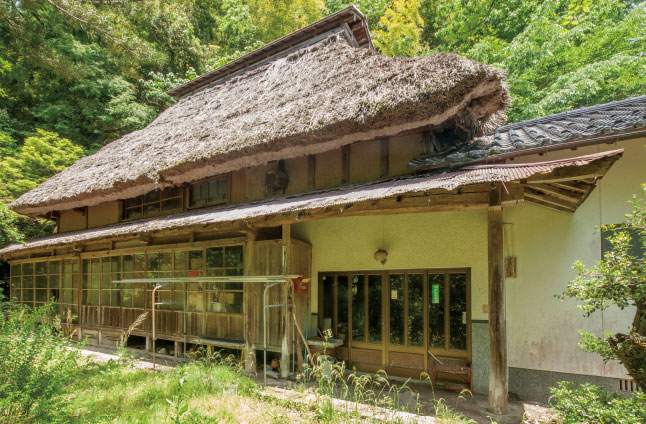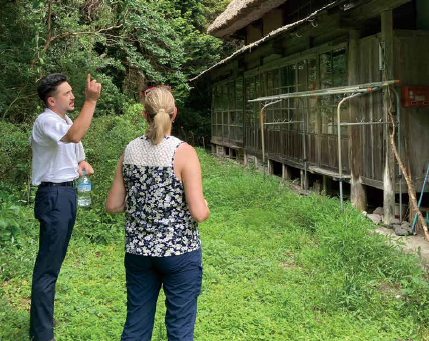Relocate and Preserve Japanese Traditional Culture
We introduce high-grade vacant traditional Japanese buildings through the “Vacant building Data Bank” and provide a one-stop service for those who wish to relocate them.
It goes without saying that continuing to use traditional buildings at their original locations is the best cultural and environmental practice. However, the population in those areas continues to decline, and the number of vacant traditional houses awaiting demolition is increasing. One solution to this problem is our relocation service. When comparing the CO2 emissions of demolishing and incinerating these houses with those of disassembling, transporting, and relocating them to overseas locations, it has been proven that relocation significantly reduces emissions.

Relocation significantly reduces CO2 emissions compared to disposal.
For traditional buildings, it is culturally and environmentally best to continue using them locally, but rather than incinerating them because there is no use for them, finding a place to use them overseas and disassembling and transporting them will significantly reduce CO2 emissions.
We will contribute to the formation of a global decarbonized society by exporting traditional Japanese reuse-oriented architecture that is premised on being disassembled and reused and showing it to the world as a sustainable model.

The total amount of wood used in a traditional building of 100m2 is about 15m3. Since wood contains 230kg of carbon per cubic meter, one traditional building contains approximately 15m3 x 230kg → 3,450kg of carbon. When wood is incinerated, the amount of carbon (kg) x 44 ÷ 12 (kg) of CO2 is emitted.


The amount of CO2 emitted during the transportation of lumber from Japan to overseas is significantly less than the amount of CO2 emitted in the case of incineration. For example, if 15m3 of Japanese pine wood (density 700kg/m3) → weight 10.5t is transported by sea from Shimane Prefecture to Amsterdam, the amount of CO2 emitted during transport, including emissions from land transport, is 1.5t.
One-Stop Relocation Service
From site tours and utilization planning to disassembling, relocation, renovation, and subsequent maintenance, we proceed while maintaining continuous communication.

Visit the buildings
Join the “Akiya introduction” tour and visit the available buildings, and consider acquiring.
Mediation with the owner
Once you have decided on the building you wish to acquire, we will support the negotiations with the owner and legal procedures in english.
Basic planning
Together we will make a plan for, process, and schedule for relocation/renovation, design, while discussing your wishes for the building’s usage. We will explore ways to create the ideal building for you.
Settling on a plan
After a decision is made on how to use the building, we will present an estimate as a relocation/renovation project. We will sign a contract when you are content with the plan.
Detailed design for renovation and relocation
We will create concrete designs and implementation schedules for disassembling, transportation, construction at the relocation site, and operation.
Disassemble/transport
We will arrange Japanese craftsmen who have the skills needed to dis/reassemble traditional buildings, and support customs and quarantine procedures for export in the case of overseas relocation.
Visit the buildings
Join the “Akiya introduction” tour and visit the available buildings, and consider acquiring.
Construction at the refurbishment
/relocation site
For construction, we will arrange for craftsmen with traditional techniques, and arrange and negotiate with contractors who will undertake construction. In addition, we can provide high-quality reclaimed materials.
Completion
We manage the construction site together with builders and craftsmen toward completion, and flexibly respond to design changes at the site according to needs.
Utilization/
Operation/
Maintenance
For a sustainable operation, we will introduce operating companies such as restaurants and lodging businesses, propose maintenance and management systems such as cleaning, and provide continuous support after completion.
